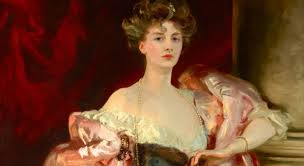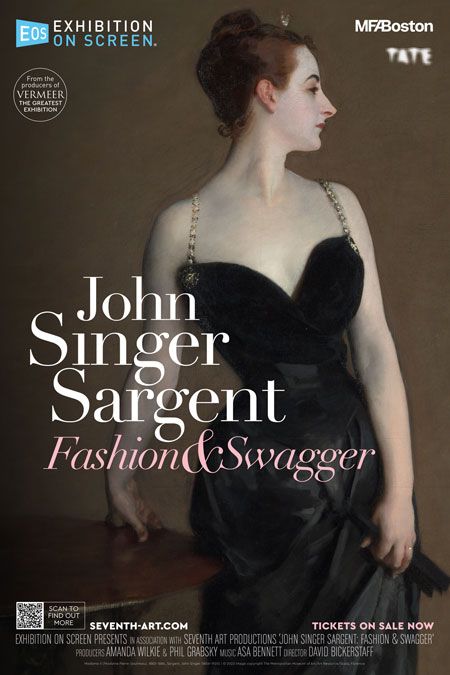Eye For Film >> Movies >> John Singer Sargent: Fashion And Swagger (2024) Film Review
John Singer Sargent: Fashion And Swagger
Reviewed by: Jennie Kermode

Looking at her in the painting, it’s hard not to imagine that she’s looking back, John Singer Sargent’s Young Lady In White. Her name was Elsie Palmer, and one imagines that if people who were close to her back when it was painted in 1890 were still alive, they would look upon it and not only recognise someone they loved but remember why they loved her. Her expression is so specific, so absolutely personal that Sargent seems to have captured a fragment of her soul.
Of course, beauty helps. We always remember beauty – and though not everyone is blessed with it, there are certain ways in which we can all strive towards it. For the average person, the most important of these is clothing. The way that we dress, the choices we make, the beauty of garments themselves and the way they interact with skin, hair, eyes – all these are part of the way that we interface with the world. Many people who would never dare to lay brush to canvas find some way of engaging with fashion. Sargent was a artist whose love of fashion and fabric was fundamental to his work, and this latest instalment in the Exhibition On Screen series focuses on Tate Britain’s exhibition of some of his most famous paintings alongside the actual garments which were part of their inspiration.

One need only look at the pictures on display to recognise what is explained early on: that Sargent built his career upon painting portraits of high society. These were people who would have spent a great deal of money on the latest fashions and wanted to preserve for the ages the way that they looked in these clothes that would, sometimes, outlive them. Sargent’s relationship with clothes seems to have gone deeper, however, and film build up the case that had the instincts of a fashion designer himself, at a time when couture was only just taking off, the big fashion houses just beginning to establish themselves. it illustrates how he altered clothing in the image to make it better fit what he wanted to express about the wearer, and how he rearranged, twisted and balanced garments in order to display their beauty and complexity to full effect. Looking at the clothes beside the paintings brings this into sharp relief, making elements of his creative process plain to see.
Were it not for his remarkable talent in capturing individuality, Sargent might have been seen by his contemporaries as a little too old fashioned, but the film showcases the way that his use of the grand manner style in his portraits enabled him to play around, contrasting the formal with the very personal and, perhaps, exploring the relationship between the symbology of the aristocratic and the queer. Though this latter element might seem like reaching, there is plenty in his work to suggest it (aside from the fact that he never married and a sister handled the traditional duties of the artist’s managerial wife). Queer artists have certainly been keen to engage with it. We see a series of portraits of Tilda Swinton in photographic recreations of his work, which themselves feature intriguing innovations where fabric is concerned.
The film is rich and informationally dense, like all Exhibition On Screen’s work. It carefully situates Sargent’s art in context, explaining key concepts for newcomers with sufficient wit and insight that others need not worry about finding themselves bored. Key paintings are present to dazzle the eye: Lady Agnew of Lochnaw; Lady Helen Vincent; the elegant Mrs Hugh Hammersley (whom film fans may recognise from the use of her portrait in Ben Wheatley’s version of Rebecca; and, of course, Madame X, that stunning image of a woman in black which shocked the Salon as much because of the agency it gave her as its supposed suggestiveness. Reflecting on his use of black the film considers the influence of Franz Hals, but also suggests that he was drawn to monochrome simply because it’s harder to work with and the challenge was really what attracted him to painting in the first place. With that in mind, we also get a flavour of his portraits of dancers and artists, the techniques he used to capture movement.
There is a postscript: a brief look at what happened after he relocated to the US, and his subsequent work on public buildings, but it would take another film to really give that its due. Here director David Bickerstaff sets aside the more spectacular aspects of those displays to hone in on the detail, on the juxtaposition of different textures and weights of fabric, the playfulness in Sargent’s art, and those slight oddities, ‘imperfections’, which brought it all to life.
Reviewed on: 18 Apr 2024

















